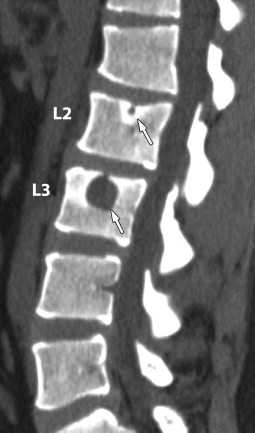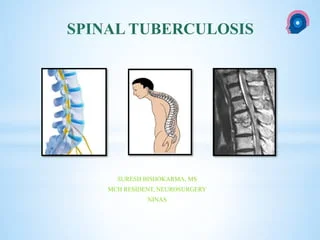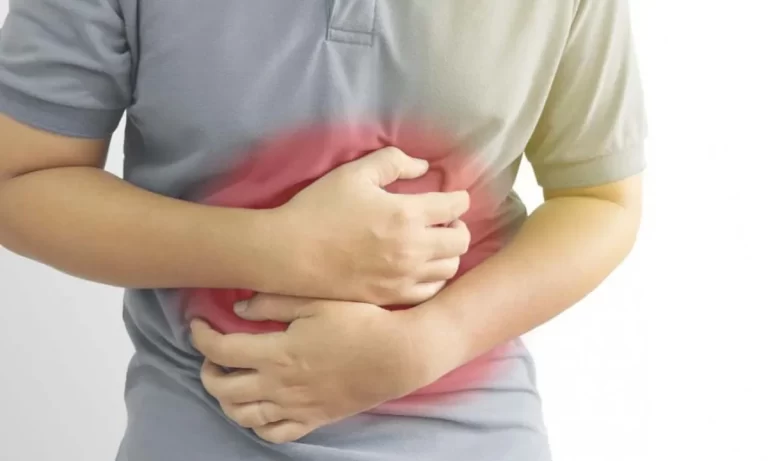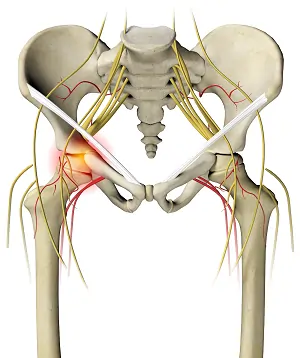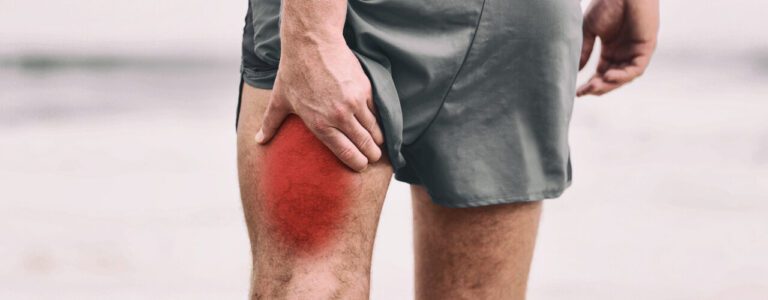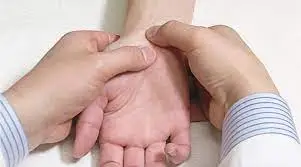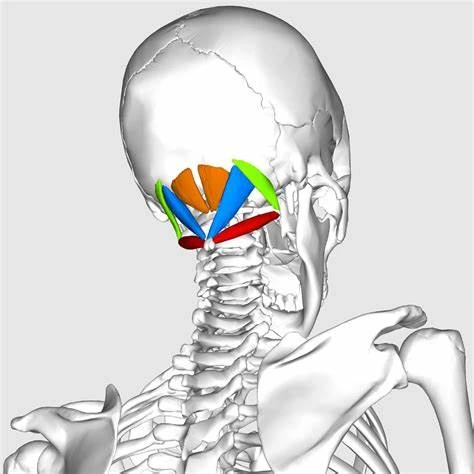Schmorl’s Node
Table of Contents
What Is Schmorl’s Node?
- By description, a Schmorl’s Node ( so known as Schmorl’s nodes) is either a downward or upward notching or protrusions( pushing) of the spinal disc cartilaginous structures, and bony surfaces of spinal bones called vertebrae. Schmorl’s Node is a common occurrence of degenerative changes with aging, detected in regular spine x-rays. still, we may also find it in the young generation and even teenagers.
- Schmorl’s Nodes or Schmorl’s nodes ( spine nodes) in youthful adults and teenagers are frequently hereditary predilection results. seventy of those diagnosed with Schmorl’s nodes have a genetic predisposition. In essence, Schmorl’s Nodes is a perpendicular herniation of the spinal disc. This herniation frequently results when there’s a weakness in the vertebral end plates. Although most cases are asymptomatic, they’re clinically significant.
- A clinical study of 400 back pain patients reported Schmorl’s nodes in about 20 participants. As similar, it becomes a point of clinical significance, especially when Schmorl’s Nodes are discovered in teenagers and young adults. Therefore, you should take steps to avoid the complications of other spinal diseases as you age if you have Schmorl’s nodes.
Causes and risk factors for Schmorl’s nodes
- In Scheuermann’s disease, – the vertebra grow unevenly during childhood
- metabolic diseases
- degenerative spine diseases
- cancer of the spine
- spinal trauma or fractures
- spine infections
How A Schmorl’s Node Diagnoses?
- The most common opinion of Schmorl’s Nodes is through spinal- rays. But, CT- scans and Magnetic resonance imaging assessments offer a much greater detail of the vertical disc herniation. X-rays, CT reviews, or Magnetic resonance imaging tests will show a notch or a bump seen pushing into the spines. This little notch is known as Schmorl’s Node. As mentioned before, the diagnosis of Schmorl’s Nodes in youthful grown-ups is a concern. Although most of these cases are genetically linked, some develop it due to extreme load-bearing activity.
Are Spinal Nodes Painful?
- A Schmorl’s node isn’t consistently painful; still, in some, it can be an immediate source of pain when the nodes are large or if they induce an inflammatory response at the vertebral end plate or vertebral body( spinal bone) that the end- pate attache. In most, the pain of Schmorl’s nodes is frequently the result of conditions similar to degenerative disc disease, facet hypertrophy, or spinal disc bulges.
- Spinal discs require an uninterrupted inflow of nutrients like water, oxygen, amino acids, and glucose) to remain healthy. The trouble with the spinal disc is that they don’t have a direct blood inflow to provide the needed nutrients. And as similar, the required nutrients must defuse from the vertebral body( spinal bone) across the vertebral end plates to reach the hungry cells on the spinal disc.
- The spinal disc’s nutritional requirements are met through diffusion known as “ imbibition, ” where the spinal disc soaks up nutrients through the vertebral end-palate from the vertebrae above and below. Schmorl’s nodes damage the vertebral end plate preventing them from soaking up the nutrients and causing problems in transferring the soaked-up nutrients into the spinal disc.
- Without sufficient amounts of the needed nutrient, your spinal disc becomes weak, wearing, slipping, and tearing prematurely. So, while a Schmorl’s Node may not be the only source of cause pain, it can lead to other conditions that do cause pain.
Degenerative Disc Disease, Schmorl’s Nodes & Pain
- Schmorl’s nodes cause premature degenerative changes in vertebral discs and spinal joints in the body that could become quite painful. Become weak and susceptible to tears and slippage spinal disc bulges or disc herniation. In addition, spinal disc degeneration sum in loss of disc height in the body. And the loss of disc height puts excessive stress on spinal joints in the body, causing them to wear out and become degenerative and arthritic facet hypertrophy in the body. Therefore, Schmorl’s nodes that were not painful during early life could become painful or, at the very least, a source of pain due to the interruptions they cause in the inflow of diets from the vertebral body that crosses the end plates before entering the disc in the spine.
What is the clinical significance of schmorl’s nodes?
- In short, if you have it, it means that there’s a weakness in your end pates. The end plates are the caps situated at the top and bottom of every spinal disc. These attach the spinal disc to the spinal bone. Also, the vertebral end plate is the structure demanded to transmit the needed nutrients to the spinal disc. Therefore, any weakness in the spinal end plate will directly impact the health of the spinal discs. As similar, those diagnosed with Schmorl’s Node will develop spinal disc disorders ( slipped discs). Therefore, precise preventative plans and indeed life changes for the young adults diagnosed are critical regardless of your age at the time of diagnosis.
- Teenagers and youthful adults need critical preventative measures that help avoid progression. The same applies to aged adults, as Schmorl’s Nodules can progress and cause spinal bone collapse, leading to revealing pain and disability. CSC’s chiropractic and physical therapy center offers holistic therapy options that fix and repairs the cause of your pain. Get in touch with us and discover how our methods of associated care are best for you.
What are the treatment options for patients with spine nodes?
Medical treatment
- Pain relieving medicine mainly non-steroidal anti-inflammatory drugs (NSAIDs) or acetaminophen are useful.
Physiotherapy treatment
- To recover from the aches and pains, you feel with schmorl’s nodes, you want focused therapy measures that address damaged discs, joints, and inflammatory processes that affect Schmorl’s nodes or their associated conditions.
- Many have told us that the therapy they received didn’t support them. Our advice is to get the proper treatment. Get technical care from people who know what they’re doing, not just the general or basic physical therapy or physical therapy treatments that most centers or hospitals give.
- Although there’s no specific treatment for Schmorl’s Nodes, there are things that one diagnosed with such a condition can do to help other more spinal severe diseases similar as degenerative disc disease, herniated disc( slip- disc or slipped disc), or fragmented disc. Prevention is better than cure, and those with Schmorl’s Nodes need to heed the warning. In short, if you have Schmorl’s Nodes, it would be best for you to partake in a preventative schedule to avoid the nasty pitfalls of a slipped disc.
Back Exercises for schmorl’s node
- Sit on an exercise ball with your feet and knees together and breathe evenly with your abdomen. Your abdomen should inflate when you breathe in and deflate when you breathe out. Keep your knees flex and elevate your right leg and left arm simultaneously. Lower both slowly and repeat with your left leg and right arm. Do not shift your hips or let the ball move as you perform the activity. Repeat for the number of repetitions commended by your physical therapist.
- Maintain your position on the activity ball and elevate your heels from the bottom. Breathe with your abdomen and lift your arms out to your side. Perform a quarter turn to your left, return to your starting position, also turn to your right side. Do the specified number of repetitions. Don’t shift your hips or let the ball move.
Abdominal and core exercise for schmorl’s node

- Lie flat on your back with your legs bent and bases flat on the bottom. Keep your arms by your side. stretch your abdominal muscles and butt muscles, and gently lift your body as a single unit without tilting your pelvis area. Lower your body and repeat for the number of repetitions commended by your physical therapist.
abdominal curls
- Maintain your position on the bottom and place your arms across your chest area. Contract your abdominal muscles and gently lift your shoulders. Lower your shoulders and repeat for the specified number of repetitions. Exhale as you elevate your shoulders.
Posture Balancing
- Stand with your back against a wall with your feet 12 to 14 elevation from the wall area. elevate your arms sideways at 30 degrees with your palms facing the outside position. Try to touch the wall with your hips, lower back area, middle back area, shoulders, and head while breathing with your stomach. loosen up your neck muscles, and do not force your head back against the wall. Slide your arms up against the wall until you’re unable to maintain bodily contact with the wall. Relax, step away from the wall, and repeat.
Chiropractic treatment
- still, don’t worry because, at the Chiropractic Specialty Center, If you have spinal disc problems and Schmorl’s Nodes are involved. Our expert chiropractic treatment plus our clinical physiotherapy is an unpaired cooperative method of care.
Surgical treatment:
- Surgery may be an option if nonsurgical treatments don’t relieve symptoms. Surgery may be needed for the patient.
- A diskectomy surgery is performed to remove part of a bulging disk.
- A laminectomy surgery involves the removal of part of the bones in your spine.
- According to doctors, several different types of lower reverse surgery can alleviate pressure on compressed jitters. A diskectomy surgery is performed to remove part of a bulging disk.
- A laminectomy surgery involves the removal of part of the bones in your spine. also, severe cases might bear conflation or permanent obsession between two or other bones in your spine.
- Exercises after back surgery will vary, depending on your special procedure. Your doctor may also restrict your activity for over 12 weeks after surgery to permit you to recover before initiating activity.
Exercises After Low Back Surgery
- Yoga is a great way to exercise and stretch the lower back.
- Still, lower back — or lumbar — conditions that compress your nerves might want surgical procedures. These conditions constantly occur from bulging or breakdown of disks that give cushioning between the bones in your spine, or bone spurs along your spine, according to the doctor.
- Exercises after back surgery can help revive a range of motion( ROM) and strength so you can regain function. For best results, perform these exercises under the direct care of a physical therapist.
The focus of a workout after back surgery is commonly to strengthen the abdominal and lower back muscles that support the spine, as commended by the doctor.
1. Abdominal Draw In
This exercise strengthens deep abdominal muscles that help support your lumbar spine.
- Lie on your back.
- flexed your knees and place your feet on the ground.
- Tighten your lower abs and press your lower back into the floor.
- Hold for three seconds, then relax.
- Repeat 10 times.
- As your strength improves, hold this position and march your feet area, or lift one knee at a time toward your chest.
2. Plank on Forearms

This exercise strengthens your abdominal muscles and back extensor muscles, a group of muscles that run along the sides of your spine.
- Begin on your hands and knees.
- Straighten one leg at a time and place your toes on the ground, as if you are going to perform a push-up exercise.
- Keep your abs tight, and lower down onto your forearms.
- Hold this position for ten seconds and repeat it 3 times.
- As you get stronger, gradually build up your time until you can maintain a plank exercise for one minute.
3. Superman

This move also targets the back extensors.
- Lie on your abdomen with your arms stretched out straight ahead.
- Lift one arm about 2 inches off the floor.
- Hold for two to three seconds, then slowly lower back down.
- Repeat with the other arm.
- Keep your knee straight, squeeze your buttocks, and lift your leg a few inches off the floor.
- Hold for 2 to 3 seconds, then lower your leg back down position.
- Repeat with the opposite leg.
- Perform 10 repetitions with each extremity.
- As your strength improves, lift your opposite arm and leg at the same time period.
Prevention
- Prevention should not just be through care or therapy programs but also changes in lifestyles. It’s best to avoid heavy lifting or contact sports at a youthful age. It’s best not to do the weighty lifting with a youthful spine.
FAQ
Schmorl’s nodes( SNs) are a common entity that may do spontaneously or secondary to some benign/ malignant pathology. It’s described by the protrusion of intervertebral disc material through a break in the subchondral end plate of a vertebral body.
The Schmorl’s nodes (SNs) are described as the herniation of the intervertebral disc into the vertebral body. End plate fractures around Schmorl’s node could result in severe back area pain that is similar to vertebral compression fractures.
Patients with low back pain due to Schmorl’s nodes are often given home exercise schedules to manage their symptoms and build up their core stability.
Schmorl’s nodes (SN) are common, but little is known of their relationship with degenerative change and back pain or genetic and environmental factors influencing their expression.
Although Schmorl’s nodes can be seen in many asymptomatic individuals, they can be a cause of degenerative disk disease and low back area pain.

